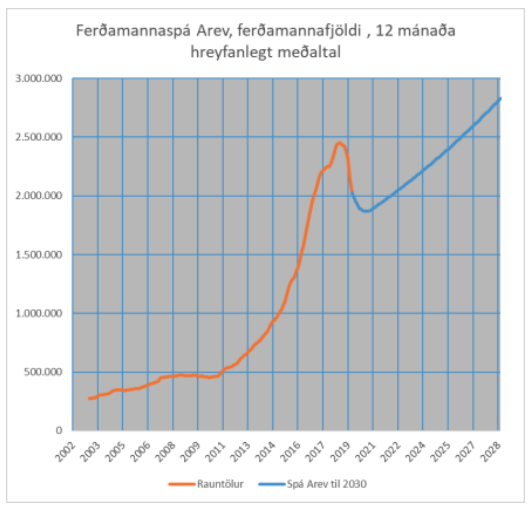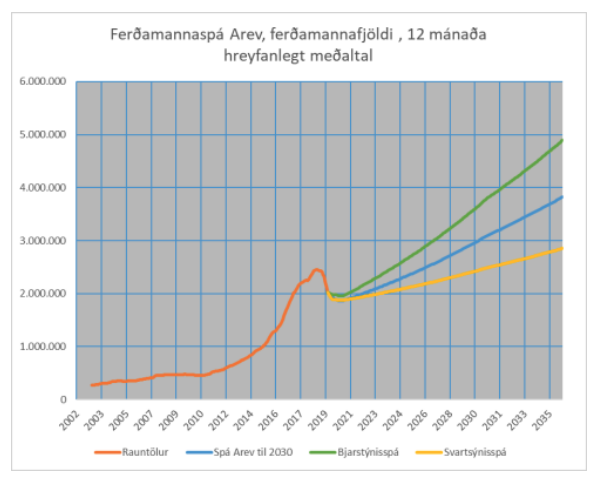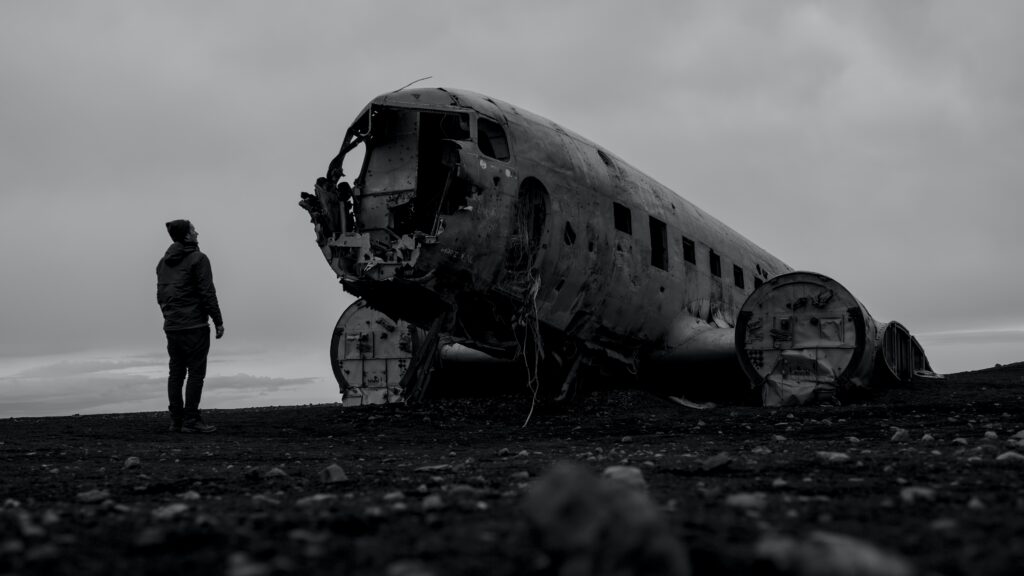The monthly annual average number of tourists is now almost 2.0 m people. The forecast assumes that the average will reach 1.8 million people in March / April 2020, but that it will then start to grow again.

The right axis of the chart to the right shows that until mid-2017, the monthly annual average continued to increase proportionally. In 2017, this started to reverse and the situation is now such that the average has been falling by 17-20% per month. In October 2019, the decrease was 19.2%. The average is now almost 2.0 m. It will reach 1.9 m. at the end of the year. WOW began to reduce its supply in October 2018. Despite this, the average will continue to decline at least through March in accordance with official seat availability figures.

The average will drop to 1.9 m. at the end of the year and the total number of tourists in 2019 will be around or over 1.9 m. The average will drop to 1.8 m. in March / April 2020. Arev then staged two other scenarios. According to the optimistic scenario (green line), the average will fall to just over 1.9 m. and start growing again. According to the pessimistic scenario (yellow line), the average will fall to just over 1.7 m. before it starts to grow again.

Finally, here is a picture showing the relationship between the real exchange rate and the number of tourists. The yellow line shows the real exchange rate of the Icelandic króna and the brown line the number of tourists. As can be seen, a sharp rise in the real exchange rate from 2015 seems to be reflected in a decrease in the number of tourists 12 to 24 months later. The effect is therefore long to be seen, which is not unlikely as the tourism industry depends on the seasons and in general both tourism operators and the tourist have some reservation when traveling. Changes in the number of tourists and changes in the real exchange rate, on the other hand, are closely related in time, as is normal, as changes in short-term foreign exchange inflows are determined to some extent by the number of tourists. The variables are therefore interdependent. The blue and gray lines thus describe the same object to a large extent.

